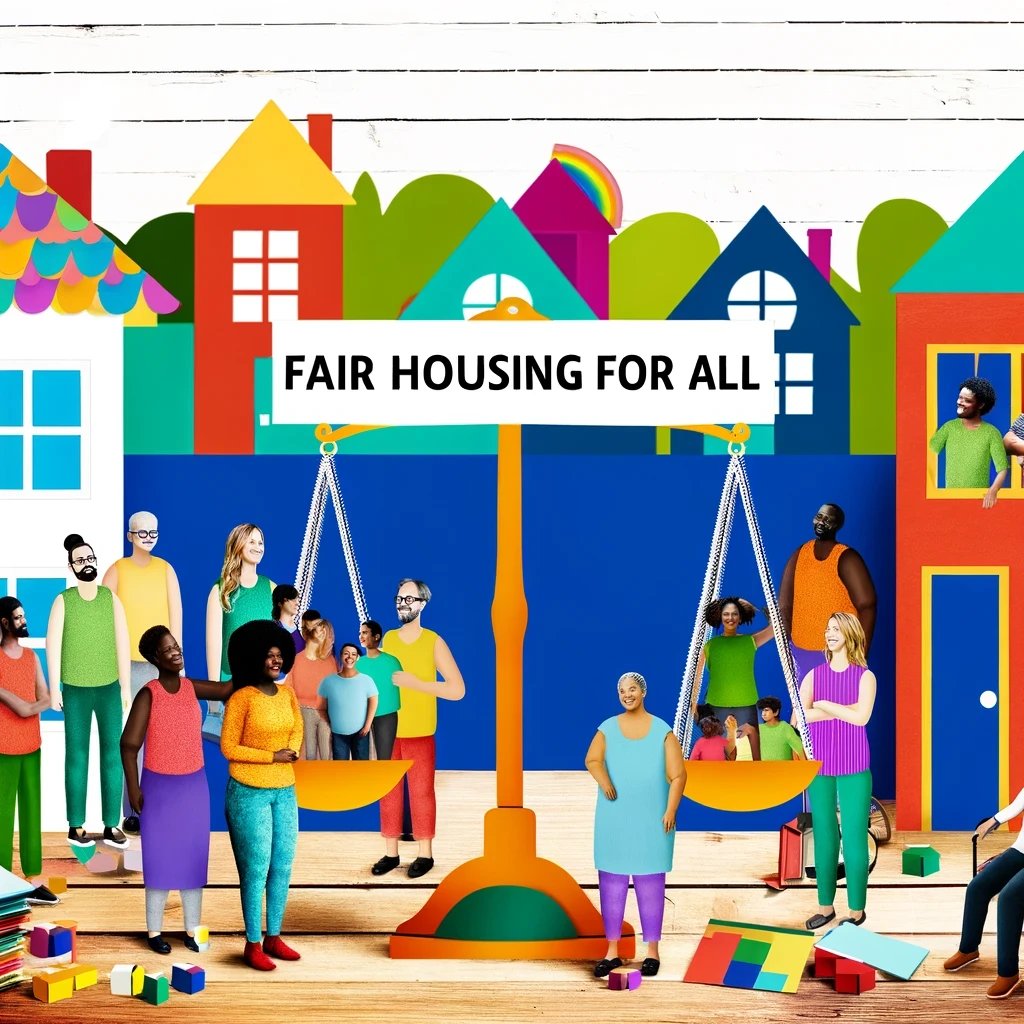Fair housing in America, a journey marked by challenges and triumphs, is a story of how a nation grappled, and still does, with discrimination and inequality. Nowhere is this narrative more vivid than in the unique context of New Mexico, where diverse cultures and histories intertwine. Let's dive deep into this history, from its roots to its contemporary manifestations.
A History of Colonialism in America and New Mexico
When we think of fair housing measures, often, we're taught that discriminatory practices began during the Jim Crow era. The source is further back in history, and in New Mexico, it was even prior to America recognizing New Mexico's statehood in 1912. New Mexico's history of colonization is impossible for me to dive into in a blog post, but for history buffs, this link will take you to a comprehensive history, dating back to Spain's conquest of New Mexico's lands from the indigenous people living here centuries and generations prior. The Spanish conquest led to the genocide of so many families calling this land their home. Still, to this day, there are blatant inequities and injustices toward indigenous people all across the country, but especially in the southwest.
The Roots of Housing Discrimination in America
Housing discrimination in the United States didn't just appear out of thin air. It's a product of historical laws and social norms that systematically marginalized certain racial, ethnic, and gender groups, and while the fight for liberation and equality continues in 2024 and beyond, it came as a slow drip.
Jim Crow Laws and Their Impact on Housing
Imagine living in a time when laws explicitly dictated where you could and could not live based on your race. Jim Crow laws did just that, segregating communities and laying the groundwork for housing discrimination. In neighborhood Covenants, Creeds, and Restrictions all around New Mexico and the rest of the country, there are plenty of examples of terrible discriminatory measures that are, by today's standards, illegal to enforce (thank goodness).
The Great Migration and Urban Housing Challenges
As African Americans moved northward during the Great Migration, they faced new forms of housing discrimination in urban areas. This era reshaped the landscape of American cities and set the stage for future housing battles. In New Mexico, this was less prominent, because the state is primarily rural, and it is further west than some of the larger migratory trends of the United States post-slavery.
The New Deal and Housing Segregation
The New Deal era, often remembered for economic recovery, also had a darker side when it came to housing policy. Redlining, the practice of denying mortgages to people in certain neighborhoods, often based on race, entrenched segregation in American cities. This policy had long-lasting effects on community composition and wealth accumulation. In the post-war era, suburbs sprang up as idyllic escapes from urban life. However, not everyone was welcome. These new communities often excluded minorities, creating pockets of homogeneity.
The decades following World War II were a period of significant change in the United States, especially in terms of civil rights and housing.
The Fair Housing Act of 1968
A landmark in American history, the Fair Housing Act of 1968 was a response to centuries of systemic abuse and discrimination. It prohibited housing discrimination based on race, religion, national origin, and later, gender, disability, and family status. This Act was a monumental step toward equality, but was it enough? Over the years, the Fair Housing Act has been amended to include more protections, reflecting a growing understanding of what fair housing really means. These amendments highlight the ongoing evolution in the fight against housing discrimination. Ultimately, while this monumental act was critical to moving America in a positive direction, it did not right the wrongs of excluding generations of families from wealth accumulation through property ownership. To some, it may be looked at as enough - but to others, it was like a bandaid on a stab wound.
New Mexico's Early Settlements and Land Grants, and extra protections
New Mexico's history of land grants and settlements by various cultural groups set a distinct backdrop for housing practices. How did these historical factors influence today's housing landscape in New Mexico? Today, New Mexico faces its own set of fair housing challenges. From rural to urban areas, the struggle for equitable housing continues, influenced by the state's diverse demographics and history. Our state passed housing protections to include LGBTQ+ folks, most importantly protecting transgender and gender non-conforming individuals to have equal opportunity to homeownership.
The Current State of Fair Housing in America
Now, let's take a look at where America stands today in terms of fair housing. Have we achieved the dream of equal housing for all? Despite significant progress, the journey isn't over. Housing discrimination still exists, but so do efforts to combat it. What are the current challenges, and how are they being addressed? Annually, reports arise of landlords, real estate professionals, appraisers, and lenders practicing discriminatorily through either conscious or unconscious bias. Federally, Housing and Urban Development continues to push for inclusive programs, funding opportunities and grants to expand access to homeownership, and in New Mexico, our Mortgage Finance Authority often has grant and down payment assistance programs to continue the uphill battle of equal housing opportunities.
Conclusion
Reflecting on the history of fair housing in America, and specifically in New Mexico, it's clear that this journey is ongoing. From the roots of discrimination to the branches of contemporary challenges, each era has contributed to the narrative. The fight for fair housing is a testament to the resilience and persistence of those who believe in the right to equal housing opportunities. As real estate professionals, we have an obligation and a duty to push for equal housing rights for all. If you believe you or a loved one have experienced housing discrimination, file a report with Housing and Urban Development here.
The Lovely Home Company is dedicated to advancing homeownership to everyone - if you are looking for a real estate professional to represent your best interests, reach out to us to schedule a time to meet.




